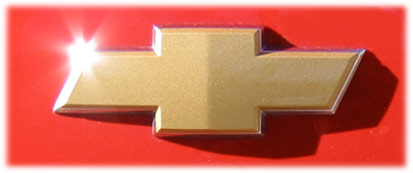 Chevrolet SSR Roadster - review, photos, interview with an engineer, and more
Chevrolet SSR Roadster - review, photos, interview with an engineer, and more Chevrolet SSR Roadster - review, photos, interview with an engineer, and more
Chevrolet SSR Roadster - review, photos, interview with an engineer, and moreGM history follows our list of car reviews
General Motors was the world's largest automaker from 1931 to 2005. Founded in 1908, by 2009, GM employed about 317,000 people with manufacturing operations in 32 countries and sales in 200 countries. Until 2008, GM sold nearly 9 million cars and trucks per year during the 21st Century.
Thrown together by William Durant and held in place by Pierre DuPont, General Motors was the world's largest company for many years. GM's master plan was to have an automaker for each niche, taking customers from their entry level Chevrolet up to their luxury Cadillac. The divisions were originally semi-autonomous, with different bodies and engines, but that was slowly eliminated through a series of expensive cost-cutting moves.
(After being kicked out of the company he created through a series of buyouts and mergers, Durant teamed up with French racer Louis Chevrolet to start another new car company. Using Chevrolet as his key, Durant came back to power at GM, only to be thrown out again. He then built Durant Motors which very nearly repeated his success with Chevrolet. When Durant died, he was running a bowling alley - with plans for a chain of bowling alleys that would dominate the nation. DuPont's balance of engineers and financial people was designed to prevent the riches-to-ruins swinging caused by Durant's mix of genius and over-reaching; this worked until the early 1960s, when the financial people took over.)
By the 1990s, the structure had become unwieldy, with excessive duplication across the various brands as each brand became its own fiefdom, reaching down to entry-level buyers and up to near-luxury buyers. GM's many parts divisions, acquired by purchase and built from within, were spun off at the turn of the century into Delphi, but that only intensified the nightmare of parts losses.
In 2005, GM announced that it would slowly reduce the number of vehicles in the Pontiac and Buick lines, but this never really happened. Finally, in 2009, the ax fell onto Pontiac; Saturn and Hummer were sold; and the mighty General Motors declared bankruptcy.
John DeLorean wrote a great deal about the follies of GM's moves in the late 1950s and 1960s, explaining how GM started to lose ground, to the point where the company found itself no longer in command of the American marketplace.
GM had been taking advantage of its worldwide leadership, bringing in Opel (GM-Europe) models to form the basis of cars like the Cadillac CTS.
While GM cars vary in quality, they have been getting better each year, and today have few common weak points. The 3.8 engine, common across brands, is still strong, as is a new 4.2 liter truck inline six and the Vortec V-8 engines, and the Cadillac Northstar series. A concept engine showed off a wide variety of advanced technologies. Enthusiasts can also look forward to a new V-12, a new V-6, and a new six-speed automatic transmission.
Cadillac moved from silent, well-cushioned, large cars to more sporty models, leaving the Lincoln and Lexus crowd behind in favor of the BMW buyers, while preening Buick to take Cadillac's prior place.
General Motors owns parts of Suzuki, Maruti, and Daewoo / Ssangyong, as well as Chevrolet, Buick, Opel (Vauxhall in the UK), Holden (Australia/NZ), Cadillac, GMC and (trucks). Most of these brands were purchased or acquired in mergers.
Reviews of past GM cars
|
Reviews of past GM trucks
|